A brake proportioning valve is an essential component of a vehicle’s braking system, as it allows the driver to adjust the amount of brake pressure applied to the front and rear brakes.
This helps ensure that the brakes are balanced and that the vehicle stops smoothly and evenly under various conditions. Wilwood is a leading manufacturer of brake proportioning valves, and their valves are used on a wide range of vehicles.
This article will provide an overview of how to adjust a Wilwood brake proportioning valve. We’ll explain the steps involved in the process and the tools and equipment you’ll need.
By following these instructions, you can adjust your Wilwood brake proportioning valve and ensure that your vehicle’s brakes operate at their best.
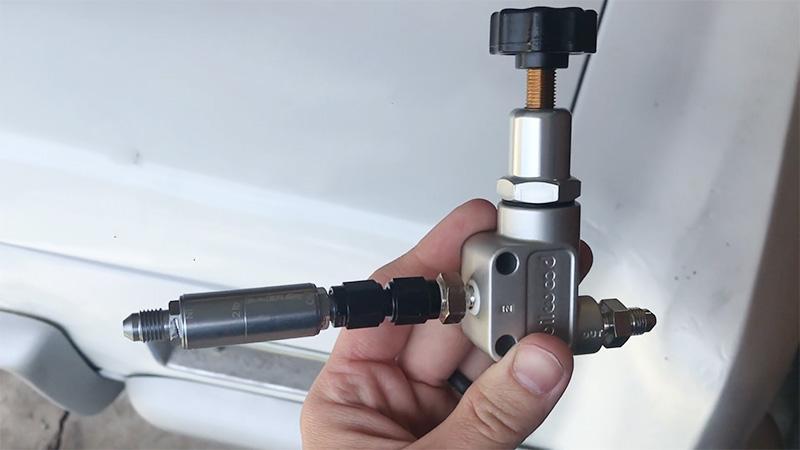
Contents
How To Adjust Wilwood Brake Proportioning Valve?
The exact method for adjusting a brake proportioning valve will vary depending on the type of valve and vehicle, so it’s important to consult your vehicle’s owner’s manual for detailed instructions.
Here are the general steps for adjusting a Wilwood brake proportioning valve:
- Locate the brake proportioning valve. In most vehicles, the brake proportioning valve is located near the master cylinder, on the frame or firewall of the vehicle. It may also be found in the trunk or under the vehicle.
- Identify the adjustment mechanism on the brake proportioning valve. Wilwood brake proportioning valves typically have a knob or lever that can use to adjust the brake pressure.
- Adjust the brake proportioning valve according to the instructions in your vehicle’s owner’s manual. This typically involves turning the adjustment mechanism to increase or decrease the brake pressure on the front or rear brakes.
- Test the vehicle’s brakes to ensure that they are working properly and that the brake proportioning valve is adjusted correctly. This may involve driving the vehicle and applying the brakes at various speeds and conditions to ensure they operate smoothly and evenly.
It’s important to note that adjusting a brake proportioning valve is a delicate process that requires some knowledge and experience. If you’re unsure how to adjust the valve properly, it’s best to seek the help of a professional mechanic.
What Does A Proportioning Valve Do?
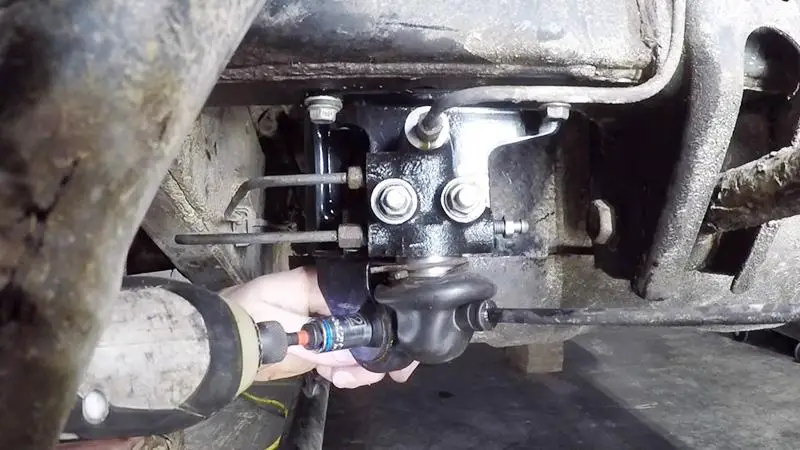
If you are installing disc brakes on a street car or converting a classic to disc brakes, you must install an adjustable proportioning valve.
A combination valve is usually installed below the master cylinder or plumbed into the rear brake line. Some confusion exists, however, regarding what these valves do, how they operate, and how they are properly adjusted.
When a tandem master cylinder is used without a proportioning valve, the brake line pressure delivered to each outlet will remain the same.
Due to the limited traction that rear wheels have (in a stop), and the limited effectiveness of rear brakes, it is necessary to adjust the rear brake pressure accordingly.
The calipers and master cylinders of race cars with separate master cylinders are made with different bore sizes. As a result of this, the rear receives less pressure at all times, although a proportioning valve may be used occasionally.
Clearing The Concept
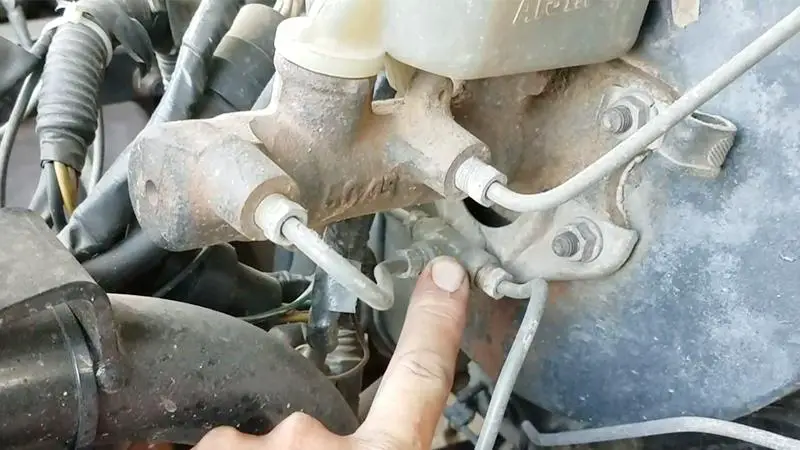
People often have trouble understanding what “proportioning valve” means. By reducing the pressure that passes through it by a set amount (once initial pressure is reached), the valve acts more like a pressure regulator.
Increasing the force going to one brake circuit does not increase the force going to the other brake circuit. It is important to note that the proportional relationship between front and rear brakes will change when a valve reduces pressure in one circuit (front to rear brake bias).
The valve is unlike a hose spigot in that it does not directly change the amount of pressure that goes to the brakes it is plumbed into.
Knobs and levers change the pressure level at which the valve is triggered. This is sometimes referred to as the “knee point” because a graph of brake pressure bends at this point.
As counterintuitive as it may seem, the valve dramatically reduces maximum pressure when the knob or lever is fully pushed out.
Once it’s screwed in and the lever is clicked over to the right, the proportioning valve will allow more pressure to reach the rear brakes prior to proportioning.
How it Works
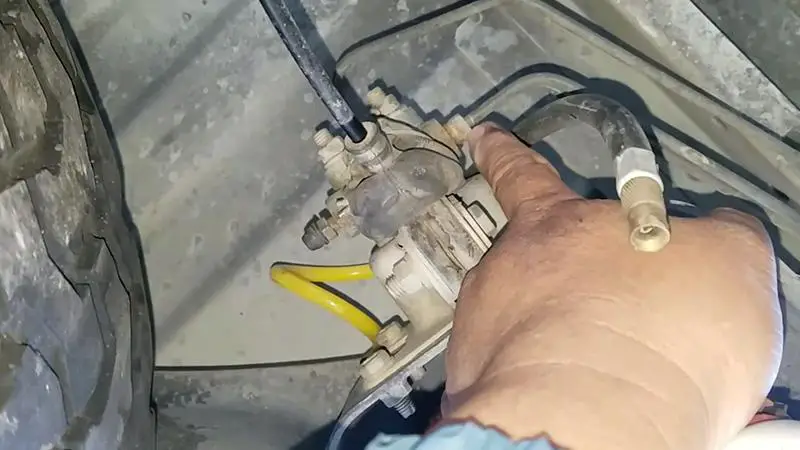
Adjustable proportioning valves seem simple at first glance, but their inner workings can be deceptively complex.
On the inside, there is a piston with a smaller effective surface area at one end compared to the other and a spring with a knob or lever that controls preload. The fixed proportioning rate depends on the difference between the piston areas.
On a typical day, the valve doesn’t do anything, as all brake line pressure passes through it as if it didn’t exist. When this force exceeds the preload force on the spring, the larger area piston (the outlet line to the rear brakes) moves, cutting off the inlet and outlet.
Upon unseated piston, the master cylinder pressure pushes on the piston’s smaller upper section, which moves the piston’s larger lower section, transmitting pressure through the fluid to the rear brakes.
When the valve is closed, adding pressure to the rear brake line by increasing the pressure from the master cylinder will open it again. Initially, the pressure rises to a lesser extent, but then it reaches a higher level and closes the valve again.
Drivers would not notice the valve cycling, but our engineers have confirmed it on test rigs in the laboratory. Hydraulic disadvantages arise from the different-sized ends of pistons.
A piston with 57% more surface area is connected to a smaller piston with 1000 pounds of force pushing on it, resulting in 430 pounds of force acting in the chamber. (Without the preload spring in the system, the piston would have 1000 pounds of force pushing on it).
Using the graph below, you can see how much output you get for a specific input with different preload settings.
The slope of the curve changes noticeably once the line pressure passes the point where the valve closes when you graph the line pressure at the rear brakes against the master cylinder.
The term “knee point” was derived from this bend on the graph. It takes full line pressure to overcome the preload on the proportioning valve spring before full line pressure is applied to the rear brakes. The additional force delivered to the rear brakes is only 43% at that pressure.
Installation & Adjustments
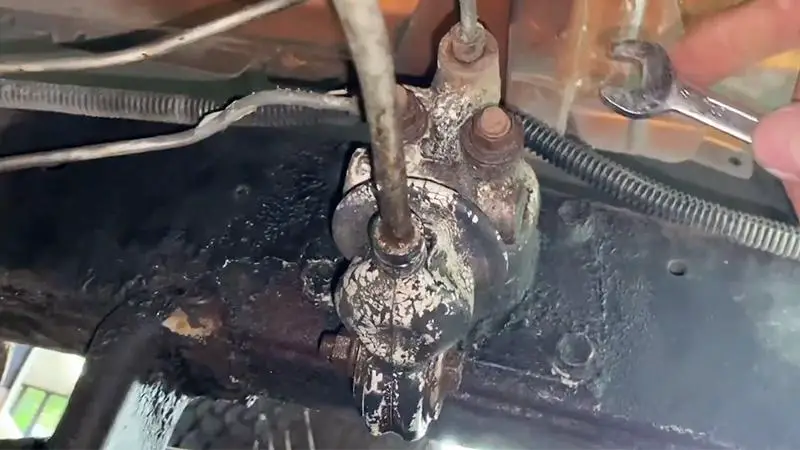
To prevent the rear wheels from locking before the front wheels, proportioning valves are normally installed in the rear fluid lines.
This allows a driver to adjust the front-to-rear bias percentage to compensate for tire wear, fuel burn-off, or changing conditions on the track.
In general, it is not recommended to reduce the braking capacity of the front wheels. If you wish to mount the valve through a panel, use only the two .25-inch holes on the valve body. Do not remove the end cap or adjuster knob.
A double flared hard brake line is connected to the valve using two inverted flare fittings that are 1/8-27 NPT to 3/8-24 inverted flare fittings.
A pressure line from the master cylinder should be connected to the “IN” port. Ensure the “OUT” port is connected to the line going to the calipers.
With an arrow on the knob, you can adjust line pressure to the calipers in the direction indicated by the arrow.
With the knob rotated completely counter-clockwise, a maximum pressure reduction of 57% can be achieved. As the knob is rotated (clockwise), the line pressure will be increased incrementally until the full pressure is reached.
Changing another component within the system may be necessary if the valve’s range of adjustment is insufficient for balancing the vehicle’s bias.
Testing The System
In a safe location, the system should be thoroughly tested before driving the vehicle. As soon as the system has been bled and checked for leaks, a series of low-speed stops should be performed; average operating speeds should gradually progress.
Performance vehicles, racing machines, and other special-purpose vehicles use adjustable proportioning valves to tune and balance their brake systems. No OEM application can be directly replaced with them.
Final Words
As you adjust the proportioning valve, you adjust the preload on that spring pressing on the piston. When the knob is tightened, or the lever is clicked inward, the valve closes, and proportioning begins sooner.
